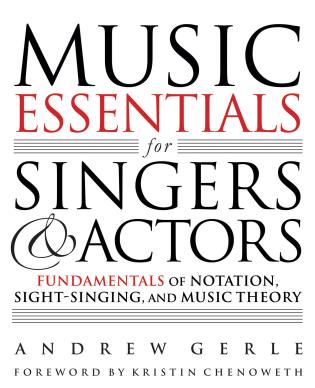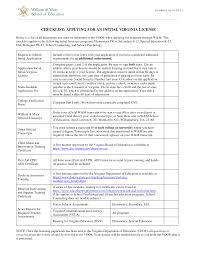
A financial aid letter should outline the cost of attendance, which includes both direct and indirect costs. The financial aid letter should also include information on the options available to families for financing attendance's net cost. In order to qualify for federal financial aid, a family must show financial need, and meet the gap between demonstrated need and available resources. This is especially true if a family is applying to an in-state college tuition.
Attendance cost
You will find information in the cost of attendance section on your financial aid award letters about your expected costs of attending school. This includes tuition fees and living expenses. This information can help you determine whether or not you qualify for financial aid. You can also use it to estimate the amount you need to borrow.
Colleges will charge students for tuition, fees, as well as room and board, travel expenses, among other costs. The total COA is usually broken down into two categories: billable and non-billable. Fees and tuition are the costs that can be billed. They are usually covered by grants, loans, federal or state gifts, as well as fees and tuition. Non-billable expenses include books, supplies, and miscellaneous costs. The student's remaining costs are usually covered by their savings. Sometimes, students will need to borrow private money to cover the remainder of their expenses.

Costs direct and indirect
The two types of financial aid you receive are calculated in different ways. The cost you pay for school, while indirect costs cover costs that are not related to college. These costs can include books, transportation, school supplies, technology, personal expenses, and other items. Sometimes, colleges lump these costs together. It is important to understand all costs.
Direct costs are tuition and fees you must pay during school. Indirect costs are any costs that you incur during the academic year but are not directly related with the educational goal. They include expenses such as rent, utilities, and other personal expenses. If you live on campus, you will have to pay rent, food, or utilities.
Loans
You can get loans in a financial assistance letter to pay for school. Students don't need to take all the federal loans. They are able to choose how large a loan they need later. Federal law allows students to receive up to $5,500 of federal loans in their first year. Federal loans don't have to be repaid. They may also have terms that are different from private student loans.
Before accepting any loan, it's important to understand the terms and conditions. Some loans are subsidized and others require a contribution from the family. Federal student loans are typically the least expensive and offer flexible repayment options. Before applying for private loans, it is best to exhaust all available government loans. To avoid being taken advantage of, make sure you understand all the terms and conditions of your loan.

Unsubsidized loans
Federal student loans are available in unsubsidized and subsidized forms. The major difference is the interest rates and when the interest begins to accrue. Subsidized loans are given to students based on financial need and won't accrue interest during the deferment period. These loans are paid in interest by the federal government.
Depending on your grade level and dependency status, you may be able to borrow a maximum of $20,000 from a federal loan. This chart illustrates the situation. The loan must be repaid within 120 days. Otherwise, interest will accrue. By returning any remaining funds early, you can reduce your loan payments.
In-house support
Your in-house letter of financial aid should be carefully read. It is important to understand the details of the letter, such as how much you will be receiving and what type of aid, as well how much you should expect from the institution. Understanding the policies of the college and university is essential, especially if you're receiving gift aid.
FAQ
What is an alternative school?
The idea behind an alternative school is to offer students with learning difficulties access to education by providing them with support from qualified teachers who understand their individual needs.
Alternative schools are designed to give children with special education needs the chance to learn in a normal classroom setting.
A lot of help is also available for them when they need it.
Alternative schools are not only for those who are excluded from mainstream schools.
They are open for all children, regardless their ability or disability.
What is the average salary of a teacher in early childhood education? (earning potential)
An average salary for an early childhood teacher is $45,000 annually
There are however areas where salaries are higher than the average. For example, teachers who work in large urban districts often earn more than those working in rural schools.
Salaries also depend on factors like how large the district is, and whether or non-degree-holding teachers.
Because they lack experience, teachers often make less than other college graduates. Teachers can see a dramatic increase in their income over time.
What's the point of education or schooling?
Education should provide students with skills that will help them find work. Education is not only academic. It is also a social pursuit where students learn from each others and gain confidence through engaging in activities such music, sports, and art. Education is about learning to think critically and creatively so that students can be self-reliant and independent. What does it take to achieve high educational standards
Educational standards that promote student success are considered good. These standards provide clear guidelines for teachers to follow with their students. Good education standards allow schools to be flexible enough for changing needs. In addition, they must be fair and equitable: every child has the same chance of success regardless of his/her background.
What is the distinction between public and private schools, you ask?
Public schools are free for all students. They offer education for kindergarten through high school. Private schools charge tuition fees for each student. They provide education for students from pre-school through college.
Charter schools are public-funded but privately managed. Charter schools don’t follow traditional curriculum. They give students more freedom and allow them to pursue their interests.
Parents who believe that their children should be able to access quality education no matter what their financial situation are fond of charter schools.
Statistics
- Globally, in 2008, around 89% of children aged six to twelve were enrolled in primary education, and this proportion was rising. (en.wikipedia.org)
- Among STEM majors, that number is 83.5 percent. (bostonreview.net)
- Think of the rhetorical power of nineteenth-century abolitionist Harriet Beecher Stowe, Martin Luther King, Jr., or Occupy Wall Street activists with their rallying cry of “we are the 99 percent.” (bostonreview.net)
- In most developed countries, a high proportion of the population (up to 50%) now enters higher education at some time in their lives. (en.wikipedia.org)
- And, within ten years of graduation, 44.1 percent of 1993 humanities graduates had written to public officials, compared to 30.1 percent of STEM majors. (bostonreview.net)
External Links
How To
Where can you find a teacher job?
Teaching jobs are available in public elementary schools, private elementary schools, public middle schools, private middle schools, public secondary schools, private secondary schools, charter schools, private and parochial (Catholic) schools, public and private (non-religious) daycare centers, and other settings.
To become a teacher, you must first complete a bachelor's degree program at one of the following:
-
A four-year college or university
-
A degree program for associates
-
There are some two-year community colleges programs
-
These three types of programs can be combined
To be eligible for teacher certification, applicants must satisfy state requirements. These include passing standardized testing and completing an internship period.
The Praxis II test is required by most states. This test measures knowledge in reading and writing as well math skills.
Many states also require candidates to obtain a specialized license before being certified to teach.
These licenses may be obtained by the boards for education of the states.
Some states grant licenses to applicants without any additional testing. These cases require that the applicant contact the state board of education to confirm if the license is granted.
Some states will not issue licenses to applicants who have not completed a master's program.
Other states allow individuals to apply directly to the state board of education for licensure.
The cost of licenses varies widely depending on their duration and the required coursework.
One example is that some states only require high school diplomas, while others require bachelor's degrees.
Some states require training in specific areas, such as literacy or child development.
Some states require applicants to hold a master's in order for them to be licensed.
When applying for certification, many states ask prospective teachers about previous employment.
If you worked in another profession, you might want to mention it on your application.
However, states are more than willing to accept previous work experience, regardless of the type of job.
You may wish to list your previous job title, position, and years of service.
Potential employers often find this information useful.
It shows them that you have relevant skills and experiences.
You may have gained valuable work experience and new skills while working.
Employers can see this in your resume.